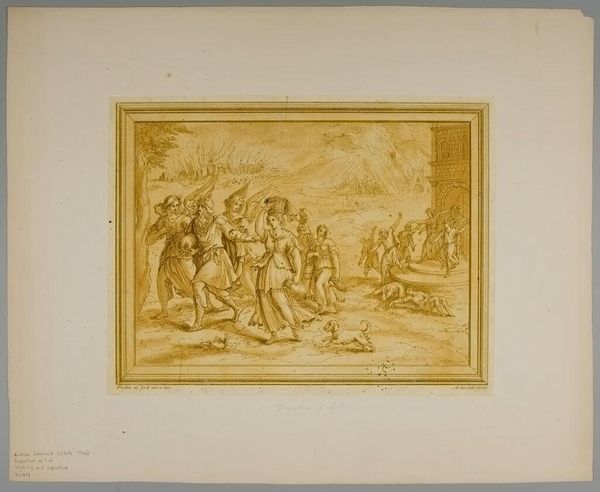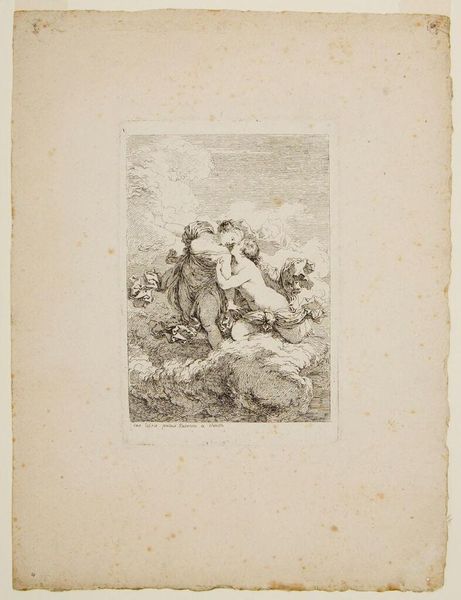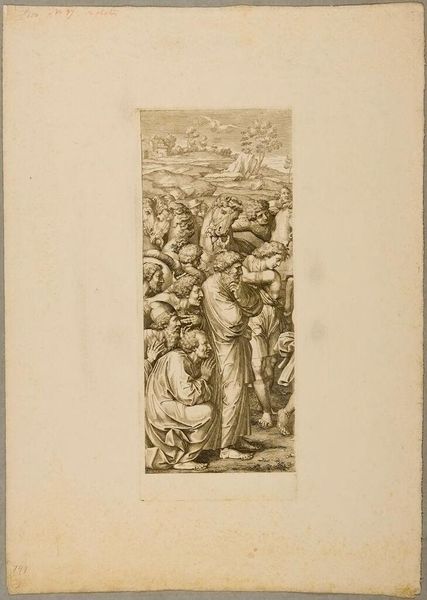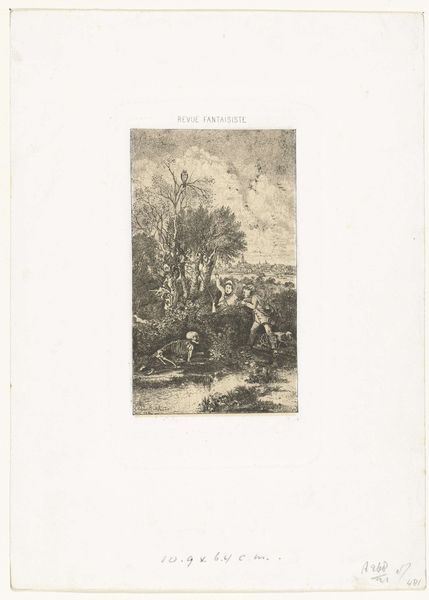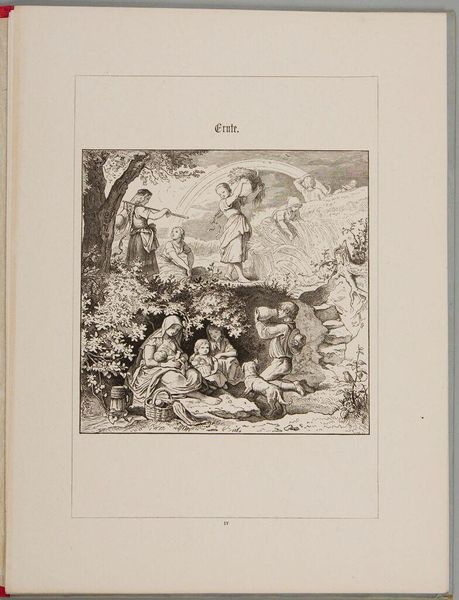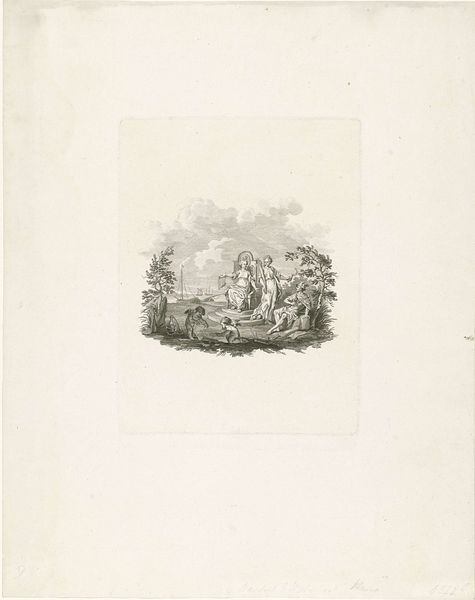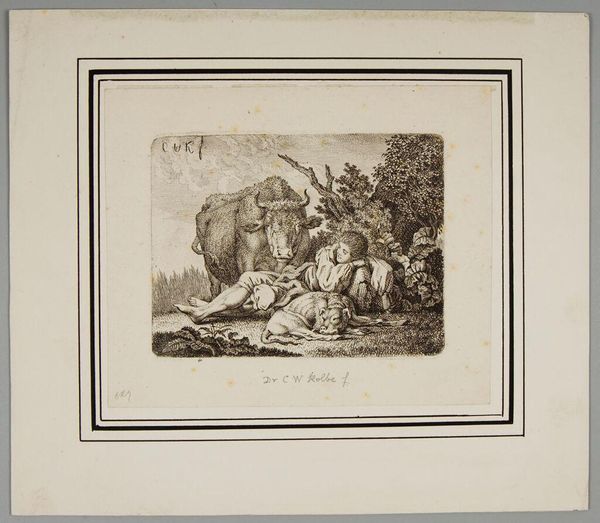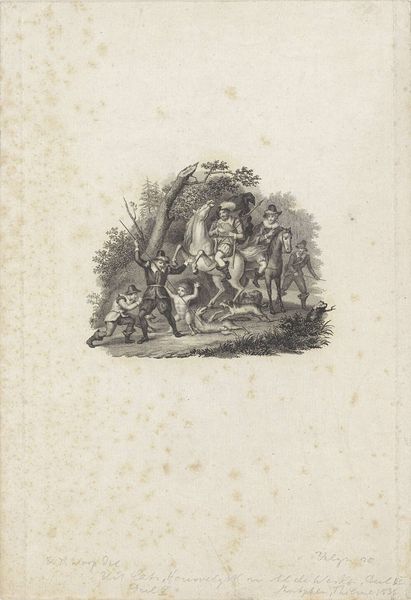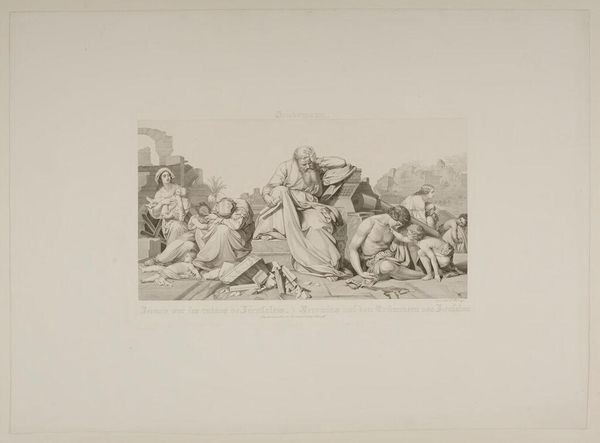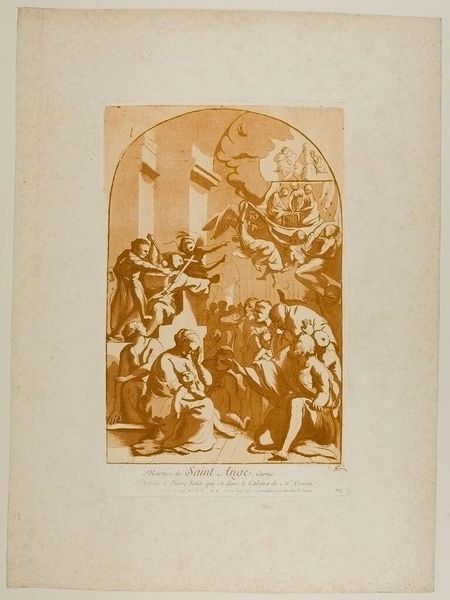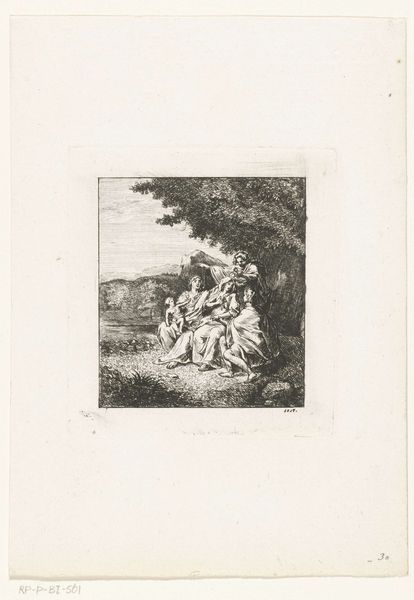
Dimensions: Image: 17.7 Ã 33.6 cm (6 15/16 Ã 13 1/4 in.) Plate: 21.2 Ã 35.5 cm (8 3/8 Ã 14 in.) Sheet: 58 Ã 43.1 cm (22 13/16 Ã 16 15/16 in.)
Copyright: CC0 1.0
Curator: This is Nicolas Le Sueur’s "Sacrifices of Elijah and the Prophets of Baal," a print held in the Harvard Art Museums collection. The image vibrates with energy despite its limited color palette. It seems to capture a moment of fervent intensity, perhaps even desperation. Editor: Desperation, definitely. Look at the composition, bodies clustered around a central point, feeding that fire. What materials were used to produce this print? Curator: It's an etching, a process involving acid to cut the design into a metal plate. We can see the mark making; it speaks to 18th-century printmaking techniques and the dissemination of religious narratives. Editor: Absolutely. And what about the socio-religious context of the time? How did the labor involved in creating this image influence its reception? Was it mass produced? What was it for? Curator: Religious tensions certainly shaped its interpretation. The image promotes the triumph of monotheism over perceived idolatry. The means of its production and distribution allowed for wide consumption, reinforcing dominant religious ideologies. Editor: It's a potent example of how material production intertwines with cultural narratives. Curator: Precisely. Understanding the social fabric of its time, and now, allows us to examine how such imagery has perpetuated unequal power dynamics. Editor: Indeed, analyzing the materials and the methods offers a lens to view its impact on society and faith.
Comments
No comments
Be the first to comment and join the conversation on the ultimate creative platform.
